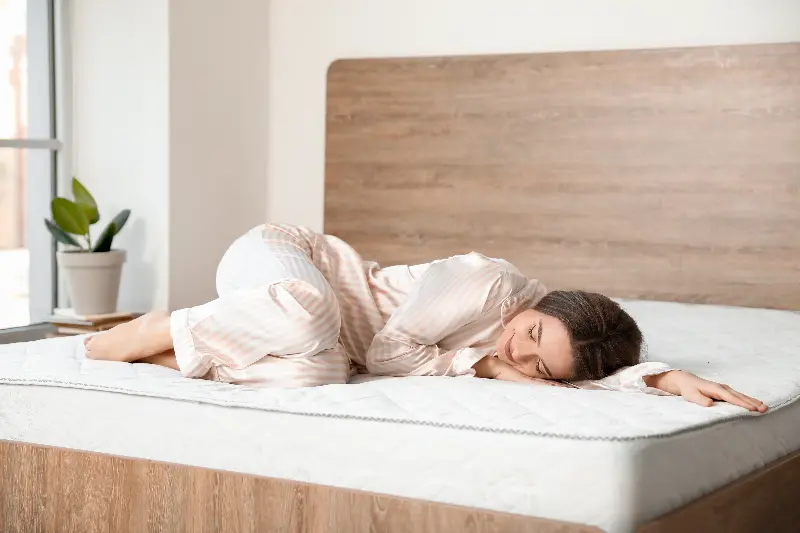
Quality rest isn’t just about the number of hours you sleep—it’s deeply tied to your bedding. Imagine drifting off into sleep surrounded by cloud-like softness, waking up each morning refreshed and energized. Science now reveals that the fabric beneath your head and the support beneath your body can dramatically transform not just your nights, but your days, too. Let’s build a smarter bedroom, dive into the world of bedding science, and unlock the secrets to the kind of rest that changes lives.
The Biology Of Better Sleep
Your body follows a natural rhythm called the circadian cycle, which hinges on light, temperature, and comfort. Quality bedding plays a surprisingly crucial role in this rhythm. As you settle into bed, your core temperature naturally drops. The way your sheets and blankets manage heat and moisture can either help or hinder this process. If your bedding traps too much heat or makes you sweat, your body may struggle to enter the deeper restorative sleep stages that repair muscles, reinforce memory, and boost overall health.
Scientists at reputable sleep institutes have found that people who use breathable materials—like organic cotton, bamboo, or Tencel—fall asleep faster and awaken less frequently during the night. These fabrics wick away moisture and allow a cooler, more even sleep environment. In one study, switching from synthetic to natural fibers resulted in up to 15% deeper sleep in participants, improving their energy, focus, and even mood the next day.
Mattress Magic: The Base Layer Matters
A mattress is more than just a cushion; it’s your sleep engine. Innovative mattress designs now blend ergonomic engineering with cutting-edge materials, tailored to suit different sleep styles and body types. Memory foam mattresses, for example, contour to your body, reducing pressure points and easing back or joint pain. Hybrid mattresses combine springs with foam for custom support and breathability, ideal for both back and side sleepers.
Support isn’t just about comfort—science links a good mattress to better spinal alignment, improved REM cycles, and less tossing and turning. In fact, a large-scale survey by the National Sleep Foundation found that nearly 92% of respondents agreed a comfortable mattress is crucial for quality sleep, often more so than the pillow or ambient room temperature.
It’s recommended to replace your mattress every seven to ten years, even if it still “feels okay.” Over time, mattresses collect allergens and lose their shape, both of which can lead to discomfort or interrupted sleep. Investing in the right foundation is the first step toward transforming your entire night.

Pillow Talk: Finding The Right Head Support
Pillows might seem trivial, but the right head support can be game-changing. A pillow that’s too high or too low can place strain on your neck, leading to restless nights and daytime stiffness. The best pillow for you depends on your usual sleeping position: back sleepers generally do best with medium support, side sleepers with a firmer, higher pillow for neck alignment, and stomach sleepers with something thin and soft.
Technology has brought forth memory foam and latex pillows designed to adapt to your shape. There are even cooling pillows now, filled with gel or phase-change materials that regulate temperature throughout the night. Experts advise those with allergies to choose hypoallergenic or antimicrobial pillow covers to reduce nighttime sneezing and sniffling—a small switch that can make a big difference.

Sheet Science: The Fabric Equation
Not all sheets are created equal. While high thread count once reigned supreme, fabric composition and weave are the newest keys to sleep success. Percale weaves, for instance, offer crispness and breathability, making them favorites in warm climates or for those who often feel hot at night. Sateen sheets, with their silky finish, are softer but tend to retain more heat—perfect for cooler rooms or winter nights.
If you suffer from night sweats or sensitive skin, natural fibers like bamboo or linen are worth trying. Linen, particularly, has hollow fibers that absorb moisture and regulate temperature naturally. Some scientific journals have reported that sleepers using bamboo or linen sheets wake less often and report feeling more comfortable in fluctuating climates.

The Power Of A Clean Sleep Space
Hygiene in bedding isn’t only about freshness. Clean sheets and pillowcases can minimize skin irritation, allergic reactions, and even anxiety over cleanliness, resulting in a more tranquil mind at bedtime. Dermatologists recommend changing sheets at least once a week and pillowcases every few days if you’re prone to acne or allergies.
Washing bedding in hot water and using gentle, hypoallergenic detergents is preferable. Additionally, airing out your mattress and pillows every few months helps remove dust mites and maintain loft, further contributing to better sleep hygiene.
Turning Your Bedroom Into A Restorative Retreat
Beyond the technical details, creating a bedroom sanctuary is a holistic process. The best bedding choices should reflect not only scientific research but your unique needs, preferences, and even personal style. Select calming colors, anchor your bed with plush throws or cushions, and use your bedding as a tactile invitation to unwind each evening.
In the end, investing time and thought into your bedding isn’t just a luxury—it’s a science-backed route to unlocking the life-changing power of great sleep. Your next chapter of well-being could very well begin with making your bed.
